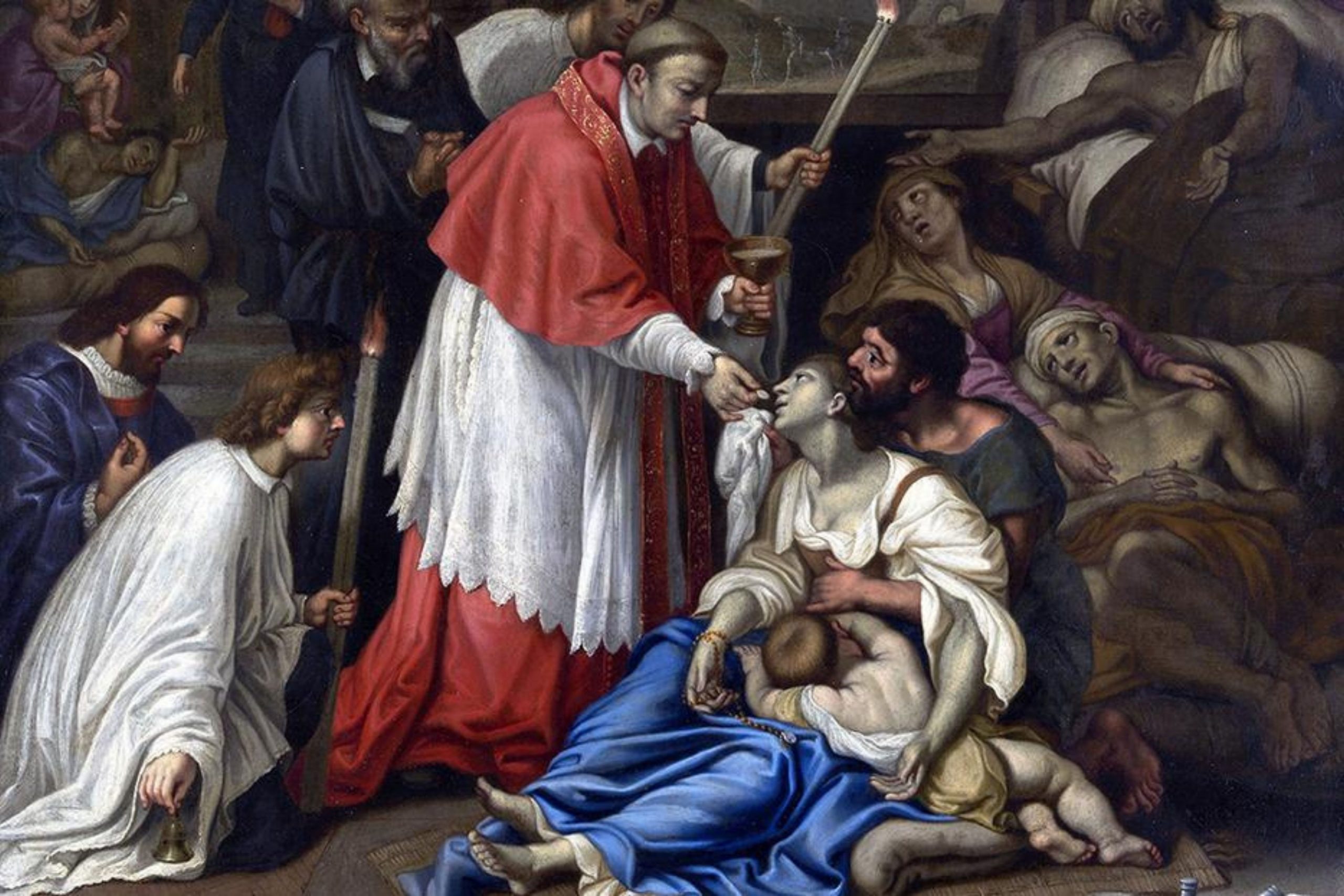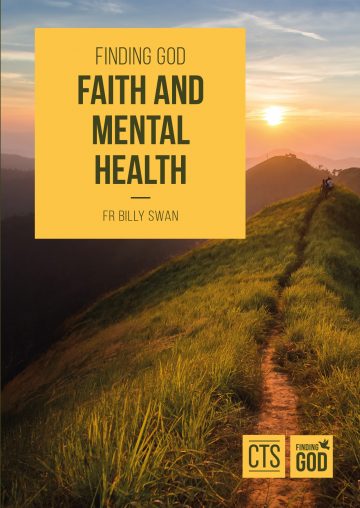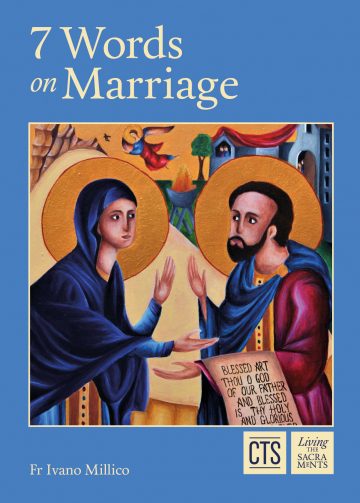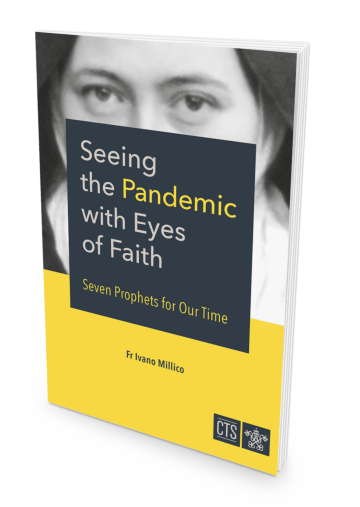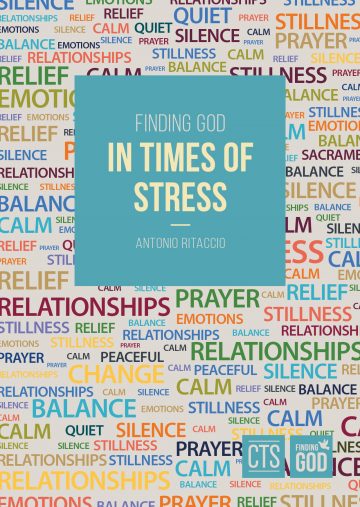In this blog, read an exclusive extract from Seeing the Pandemic with Eyes of Faith.
HAVE MERCY, O HOLY CRUCIFIX!
On Sunday 15th March 2020, six weeks into Italy’s lockdown, Pope Francis went on pilgrimage through the streets of his city, Rome. Yet there are plenty of chapels along the naves of the papal Basilica of St Peter’s and many holy grottoes in the Vatican gardens. When Pope Francis left the Vatican walls that Sunday afternoon it was not for some outdoor exercise or to recite some prayers; no, he was heading for a very specific place. Walking for about half a mile on foot, the pope entered the Church of San Marcello in Via del Corso and stood there before a large dark wooden crucifix, praying for an end to the pandemic. This same crucifix the pope wanted next to him on the evening of Friday 27th March 2020 when, from a deserted St Peter’s colonnade, he invoked the mercy of God upon the city of Rome and the whole of humanity.
In 1522, as a violent plague struck the city of Rome, this same crucifix was carried in a penitential procession from the Church of San Marcello to St Peter’s Basilica. Fearing the risk of contagion, the civil authorities tried to prevent this happening, but Roman nobles, clerics, barefoot youths with heads covered in ashes, and citizens in black habits, carried the wooden crucifix through the streets of the city crying “Have mercy, o holy crucifix!” The chronicles of the time report that the procession lasted from the 4th to the 20th August. Sixteen long days, to cover a distance of half a mile! As the crucifix proceeded the plague receded, so each rione of Rome tried to hold on to the sacred image for as long as possible. When the crucifix returned to the Church of San Marcello, the plague had completely ceased. Fifty years later, another shepherd, also barefoot and with a crucifix in his hand, went on pilgrimage through the streets of his own city, calling for mercy for his flock afflicted by the plague.
SAN CARLO AL LAZZARETTO
On 11th August 1576, the plague erupted within the city walls of Milan. Initial rumours soon turned into spreading fears. All those who could – senators, nobles and wealthy merchants, the Governor of the city as well as the Grand Chancellor – left town and took refuge in their castles in the countryside. As horses and carriages were hastily leaving a terrified city, Charles Borromeo, Archbishop of Milan, who had been out of city for the burial of a bishop friend, heard of the outbreak and at once mounted his mule and turned back to Milan. He dismounted at the Duomo and after a short prayer rode to the northern quarter of the city, where the plague had started, to visit the sick and the dying. On his return to his residence, he found those local civil officials who had the courage to stay. They were completely
lost, their leaders gone, and begged the archbishop to take charge. Conscious of the risks, Borromeo prepared for death by making his will and putting his affairs in order; he shaved his beard as a sign of sadness and penance, and began ministering to the material and spiritual needs of his
plague-stricken flock.
In the north-east district of the city, between Porta Venezia and the central railway station, stands today the small octagonal Church of San Carlo al Lazzaretto. The Church was built on the site of a big leper-house, a large quadrangular columned cloister with almost three hundred rooms where the sick infected by leprosy and plague were confined. In the middle stood a little chapel, built above the ancient temple of Santa Maria della Sanità (Mary, Health of the Sick), open on all sides so that the celebrant could be seen by all the sick patients in the cells of the lazzaretto. The building was surrounded by a moat full of water like a fortress, and was only accessible by the gate. Every day Borromeo went to visit the sick and when the building became overflowing with plague victims and the gate was barred, the archbishop walked around its perimeter praying as the lamenting inmates begged for a blessing.
To shelter the sick, Borromeo bought six large plots of land outside and around the town walls, and built wooden and straw huts. When supplies ran out, he begged for money (especially at Rome from generous cardinals), organised special collections across his own diocese, sold his own personal possessions including the gold and silver ornaments of his private chapel, and even tore down curtains from the Bishop’s Palace to use them as fabric to care for the sick in the lazarette houses. Appealing to his priests, he said:
We have only one life and we should spend it for Jesus Christ and for souls, not as we wish, but at the time and in the way God wishes. It would show great presumption and neglect of our duty and God’s service to fail to do this, with the excuse that God could not replace us by others more capable of working for his glory. This does not mean you should neglect human means, such as preventatives, remedies, doctors, everything you can use to keep off infection, for such means are in no way opposed to our doing our duty. God can replace us!
When many of his brother bishops, including the pope, begged him not to put his life at danger and urged him to use all possible caution, Borromeo answered: “From the beginning, I resolved to place myself entirely in God’s hands, without however despising ordinary remedies…a sponge soaked in vinegar and a few aromatic herbs in the mouth!”
CARING FOR BODY AND SOUL
The only paternal authority left in the city, Borromeo gathered a scientific commission of professors and practitioners advising him on how best to keep the infection at bay. A “plague directory” was published, and republished in 1630 when yet another plague struck Milan. He urged the Milanese to carry out corporal works of mercy, wrote and distributed a small booklet as a spiritual insurance policy for those left with no access to the sacraments, and gave permission to the clergy to administer the sacraments under all conditions. Special indulgences were granted. It became normal to see priests baptising, hearing confessions and giving holy communion in the streets of Milan. Borromeo himself administered the sacraments to the afflicted and when he found doors barred, he was seen entering infected huts through the windows by making use of a ladder! Still, he would take all the necessary stringent hygiene precautions. For himself, he acted as if he was actually infected, allowing no one to come near him, keeping (in his days) to a “rule of eight” in his household. Walking in the city, he made sure that “social distancing” was kept: he was accompanied by a servant waving a stick to make sure no one would get close to touch his robe or beg for a blessing. He would give alms only by placing coins in jars of vinegar, he often changed his vestments, sanitised everything with vinegar and fire, and carried with him a sponge soaked with vinegar and herbs which was regarded as disinfectant. How familiar all of this is!
Taking advantage of a brief alleviation in the contagion, Borromeo led three large penitential processions from the Duomo, with rules for “social distancing”. All began as on Ash Wednesday with blessed ashes put on their heads, calling them to penance and conversion to newness of life. Borromeo walked barefoot through the city with a rope around his neck, like a condemned criminal, carrying a crucifix in his hand (still preserved this day in the sacristy of the Duomo), singing “have mercy on us, have mercy on us”. Some of his contemporaries accused him of encouraging the spread of the pestilence by assembling people in processions and public prayers. In fact, the processions dispersed fear and encouraged the faith of the Milanese that the pestilence, by the grace of God, would finally come to an end.
“O REVEREND FATHERS”
As the pestilence reached the level of calamity, the city was cut off from the outside world, and turned into a huge lazzaretto. Deserted streets, all commerce halted, empty churches, thousands dependent upon alms, and the city finances on their knees. Throughout all of this Borromeo continued to give alms, feed the hungry, and care for the souls of his people. Borromeo called for priests to minister to the spiritual needs of the afflicted:
I have no need to describe to you the miserable state of the city…yet, this I will say, that it is no ordinary calamity which we have to endure…we see men in the hour of need deprived of the presence and support of those nearest and dearest to them. This would be grievous indeed if it only concerned the frail bodies which must one day perish…but here it is worse than this: it is not their bodies alone which are in danger of perishing, it is their souls, for which I plead… O reverend fathers, here is your opportunity…to you we look, who ought to be ready to lay down your lives for the love of God and your neighbour, especially when it is a question of saving souls… Though we have spoken of the duty of not counting our lives dear to us in his cause, we do not wish you to understand that there is of necessity danger to health or life, by God’s grace it is far otherwise, and with ordinary caution and attention to rules, risk may be avoided. But this we say, that if it should please Almighty God that any of us should catch the infection and die, that it would be a glorious end, rather deserving the name of life, for dying thus in the service of God and of our neighbours, it is most certain that we should attain to life eternal…
Shall we suffer ourselves to be overcome by the fear of death?… Fear not, my brethren, I myself shall keep my eyes upon you and will never forsake you. For my own part, you are my witnesses, that from this hour I devote myself to minister to you in holy things. I am firmly resolved that no weariness, no fatigue, no peril, shall make me quail from fulfilling any pastoral office, of doing everything in my power for the souls which God has committed to my keeping.
The zeal of Charles Borromeo for souls and his love was even more contagious than the disease itself! At his plea many priests offered themselves and were straightaway appointed to their tasks, and every day more priests joined them. From that day onwards there was never to be any lack of priests during the whole time of the plague.
At the same time, Borromeo understood the need to minister to those in quarantine whose time in isolation could have opened the door to idleness and temptations to sin. For this reason, he made provisions for “spiritual seeds” to be spread across the city. Seven times a day and seven times each night, church bells would ring inviting the people to pray for the end to the plague. At the sound of bells, the Milanese would go to their windows and a priest would lead them in prayer, while, on their knees, they sang their responses following a prayer book printed by the archbishop. Nineteen stone columns with a cross at the top were erected across the city and were visible from most houses. Altars were also erected at crossroads, where priests would celebrate daily Mass, so that those in quarantine could participate from the windows of their homes. Confessors went from house to house, sitting on the doorsteps whilst the penitent knelt inside. Parish priests went around with the Blessed Sacrament on Sundays, and gave holy communion on the doorsteps to all. To help the people in their spiritual fight, the archbishop sent around a pastoral letter on how to spend time in mental prayer and a list of spiritual reading.
THE MERCY OF GOD ALONE
The number of new cases in Milan started to diminish by Christmas 1577, and by January 1578 the plague had disappeared at last. It was calculated that around 17,000 had died in the city itself and 8,000 in the surrounding countryside, and only 120 priests among them. What should be done once a pandemic has passed? In the Hebrew Bible there is no word for “history”; rather, the word used is zachor, which means “memory”. This is quite different, because it means to see the hand of God at work in history and to be able to read his handwriting. As the pestilence left, Borromeo published a small booklet for his beloved people entitled Memoriale – “A Remembrance”. In it, he wrote:
There is one thing, my children, of which we must make mention, which will make us appreciate more fully the magnitude of the mercies we have received at the hand of God. Have always before you this great benefit which God has so miraculously worked for you, and never be at any time unmindful of his mercy.
In a sermon during the Mass of thanksgiving with all the clergy for the end of the plague, speaking of the deliverance from the pestilence, Borromeo said:
This is not by our prudence, which indeed failed us at the very outset, and left us bewildered and lost; nor is it due to the skill of physicians, who have not yet discovered so much as the origin of this malady, much less the means of counteracting it; nor does it come of tender care for the sick, for they were at the first outbreak deserted by their nearest and dearest. No, my children, no; let us never fail to acknowledge this – it was the effect of the mercy of God alone.
In January 1584, Charles Borromeo gathered together, for the last time, all the parish priests of the city of Milan. Perhaps reflecting once again on the experience of the plague, he presented to them a meditation on the shepherds of Bethlehem as figures of the parish priest as shepherd of souls: “There were shepherds…who were keeping watch over their flocks by night” (Lk 2:8). The eyes of a shepherd are called to remain open during the night, when thick darkness comes down, pointing out to others the way, and when the evil wolf attacks, they are called to defend the flock and not run away like hired men (cf. Jn 10). And yet, warned Borromeo, often the shepherds “are all dumb dogs, they cannot bark; dreaming, lying down, loving to slumber” (Is 56:10). Comparing the pastoral care of souls to a kind of hunting, with priests and bishops as hunting dogs, Borromeo spoke of two sorts of dogs used for hunting: those sent into the forest to scare the wild animals and make them come out into the open, and those sent after the fleeing animals to run them down.
We too, priests and bishops of Covid and thereafter, are to meditate upon to the words spoken by the plague’s bishop, St Charles Borromeo. We need to have open eyes and a hunting nose. We are shepherds, it is true, called to defend and nourish the sheep afflicted by the wounds of the pandemic and its consequences, but we are hunting dogs too, called to smell out the scent of spiritual dangers and temptations, to name the fears oppressing our people and help deliver them. This is what allows us to discern between prophets and spectators, between good shepherds and hired men.
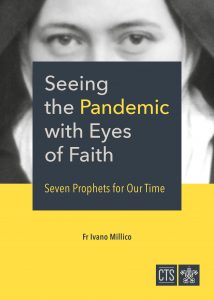 This blog is extracted from Seeing the Pandemic with Eyes of Faith. Fr Ivano Millico looks at the Covid pandemic through a prophetic lens enlisting the help of Saints who have lived through moments of great personal or societal crisis.
This blog is extracted from Seeing the Pandemic with Eyes of Faith. Fr Ivano Millico looks at the Covid pandemic through a prophetic lens enlisting the help of Saints who have lived through moments of great personal or societal crisis.
Order your copy of Seeing the Pandemic with Eyes of Faith and support our mission.
